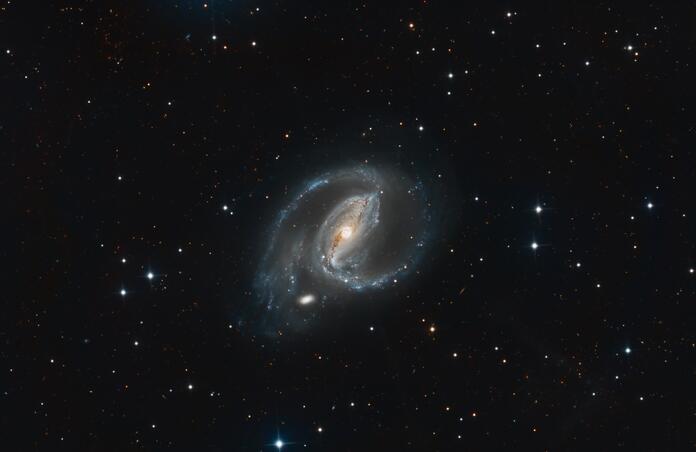The Temperature Effects on Image Focusing

Getting optimum focus for your imaging data is absolutely critical to get the best image you can. Poor focusing is one of the major reasons for poor quality data. Novice astro imagers know that focusing is affected by dropping temperatures but they may not completely understand the reasons for this.
The Critical Focus Zone (CFZ) is the plane in the optical train where the light rays entering the telescope converge in the image train. This is the location you want to place your image sensor to get the best image data. You can calculate the size of the CFZ using the following formula:

Where;
A. (Focal Length / Aperture) is the telescope focal ratio
B. Light Wavelength is the wavelength of light you’re imaging, such as with an LRGB or narrowband filter.
As an example, for my Astro Tech AT125 EDL with a 975 mm focal length with narrowband filters;
CFZ (Ha) = 4.88 x (60.84) x 656 nm = 190 microns
CFZ (SII) = 4.88 x (60.84) x 672 nm = 199 microns
CFZ (OIII) = 4.88 x (60.84) x 500 nm = 137 microns
Now, lets look at what happens to the CFZ when the temperature drops during your evening imaging session. For a refractor, there are 2 primary affects; Optical tube contraction and the Index of Refraction of refractor optics. My optical tube is made of aluminum. The Coefficient of Thermal Expansion for aluminum is 0.024 microns / mm Celsius. To get the change in optical tube length per degree of temperature change -

Where:
L = focal length of the refractor
Delta Temp = Degree change
For my refractor then:
(0.024) x (975mm) x (1 degree) = 23.4 microns
This means that for every degree drop in temperature, the optical CFZ moves 23.4 microns inward as the optical tube compresses. You should also note that the change is more pronounced for shorter wavelengths of light as shown in the difference between Ha filters and OIII filters.
The Index of Refraction has 2 components; one for the ambient air temperature and one for the glass of the lens in the optical tube. As a general rule, the Index of Refraction for the ambient air doesn’t change much with temperature. However, the Index of Refraction for the lens glass does change with temperature depending on the glass. Refractors with multiple lenses (doublets, triplets, petzval) will be more complex to calculate this effect than a refractor with a single lens.
To calculate the Index of Refraction, you will use Snells Law:

The bottom line is this:
- When the temperature drops, your optical tube will shrink and will move the CFZ inward. The focus point you use at the beginning of the imaging session will change depending on the change in temperature and you will need to check and adjust it periodically.
- The Index of Refraction will also change the how the light rays enter your optical tube and add complexity to the change in the focus point that you will need to account for.
- A good rule of thumb is to document the ambient air temperature when you begin a session and track the temperature and perform a focus check once an hour during your imaging session.
